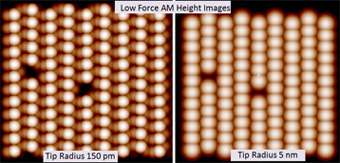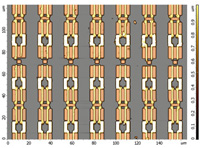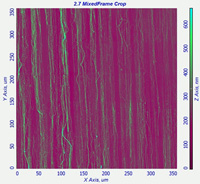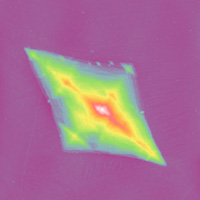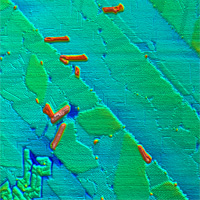НТ-МДТ в Америке. Выпуск новостей # 5, Апрель 2015
|
Introducing a Unique Thermal Cabinet for AFM Applications By employing an innovative patent-pending approach the new cabinet provides superior thermal stability of our AFM microscopes combined with low acoustic and vibrational noises. Variations of the microscope temperature, which is set slightly above room temperature, are smaller than 0.01 ˚C. An acoustic isolation damps any unwanted external disturbance by more than 30 dB level. The bungee-cords isolation offers the exceptionally low vibrational noise yet a customer has the option of using an active vibration protection tablet inside. |
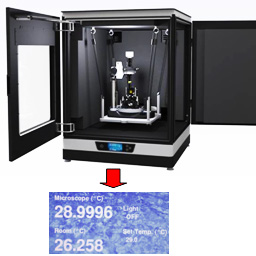 Display shows temperature stability at 29 ˚C |
|
| General Topic: Theory of AFM | ||
| Since the appearance of Atomic Force Microscopy in 1986 this technique has been developed into a useful characterization technique broadly applied to the visualization of surface structures and quantitative studies of local mechanical and electromagnetic properties. Despite notable progress in AFM applications the theoretical backgrounds of this method are still in their infancy. Our efforts in understanding the probe behavior in quasi-static and dynamic AFM modes are focused on the use of the asymptotic KBM method for solving the Euler-Bernoulli equation describing mechanical and electrostatic interactions between the probe and a sample. This approach has been successfully applied to the classification of AFM modes, the design of an AFM simulator, the analysis of the maximal force and deformation in amplitude modulation (AM) mode and to the extraction of elastic modulus from the amplitude-versus-distance curves recorded in AM applications. The difficulty of the theoretical study is the integral equations describing the relationship between the probe amplitude/phase/frequency and the tip-sample forces. | For the Hertz model the equations are solved analytically, for complicated models - more efforts are needed. In an illustration of the AFM simulator the images of molecular crystal with two defects were calculated for the probes with an atomically sharp tip and with a tip of a common size. As seen below, the defects are seen in both cases yet with smaller (sub-Å) size corrugations for the larger tip.
|
|
| From the Laboratories | ||
| One of the advanced AFM applications, which is enabled with our microscope Titanium, is a stitching procedure that assembles the recorded images into a single macro-image covering an area beyond the limits of a single scan. The procedure consists of a precise motor-driven translation of the probe to the desired samples locations under optical control. In the first step the multiple images of a moderate scan size are collected in the MultiScan operation. Afterwards the off-line software procedure generates the macro-image by summing them up into an extended file. One such file, which was obtained on the surface of a complementary metal–oxide–semiconductor (CMOS) is shown below. In the generated height image with 165 µm on side, you can hardly distinguish the lines, at which the stitching was performed.
|
The height macro-image of this sample with dimensions of 350 x 350 µm is given below. It shows numerous bundles of fibers with different diameters.
|
|
| We are the Tough Guys! | ||
| A small accident happened to our software architect Dr. Sergey Belikov was described by his son Andrei Belikov (Founder of Comedy Hideaway, Santa Barbara/Goleta) on his Facebook page: “My dad is the toughest guy I know, he fell off a ladder Monday and badly broke his arm/wrist. | Paramedics show up. Paramedic: "On a scale of 1 to 10 describe your pain" Dad: "..... Zzero" Paramedic: "What? No, do you feel anything? How does your arm feel?" Dad: "...Feel like...broken"...(Paramedic turns to me) "This might be the toughest guy we've ever seen.” | |
| Cool AFM Images | ||
|
Height image of single crystal of ultralong alkane C242H486, which was obtained in the frequency modulation mode. |
Height image of self-assembled aggregates of semifluorinated alkanes on graphite, which was obtained in amplitude modulation mode. |
|
| Forthcoming NT-MDT Events: | ||
| May 18: NT-MDT Seminar “Expanding Atomic Force Microscopy Studies to Quantitative and High-Resolution Mapping of Local Mechanical and Electrical Properties” in Lawrence Berkeley National Laboratory, Berkley, CA May 28: NT-MDT Webinar “New Developments in AFM Oscillatory Resonance Modes: Frequency Imaging and Frequency Modulation” 11:00AM PST. |







